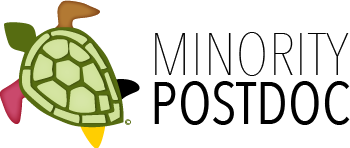Story-telling at the ScienceOnline2012 #scio12 #diversity Session
No wonder American Indians have a problem with the concept of Science (with a capital "S") -- in most North American indigenous languages there is no word for science.
In fact, a major exhibit funded by the National Science Foundation that toured the country recently, including a stop at the Smithsonian's Museum of Natural History, begins with the cryptic message that there is no word for science in the Yup'ik language. Is it any surprise, then, that some native peoples fail to embrace the concept called "Science"?
I had the pleasure of attending the recent conference focusing on communicating science called ScienceOnline2012, thanks to the generosity of MinorityPostdoc.org and its founder, Alberto I. Roca.
Dr. Roca invited me to talk about my research on Science and American Indian ways-of-knowing to a captive crew of science writers and bloggers, who seemed surprised to learn that American Indians and other indigenous folks have no word for science.
Rather, science is woven into the everyday living and discourse in traditional Indian circles, as noted by Gregory Cajete (Tewa), who lectures widely about Native Science.
Drilling down to issues that separate Native Science from Western Science can help us unpack the reasons why some American Indian peoples and tribes are slow to embrace Western Science. And that explains, in part, why American Indians are seldom seen at the forefront of social discourses about science, including at such venues as ScienceOnline2012.
indigenous folks have no word for science
Cajete asserts that one important distinction is that, traditionally, indigenous peoples didn't separate science from other life ventures -- science was enfolded into daily living. Science, art, story-telling, medicine, spirituality - all the dimensions that ground what we know and how we know, spring from the same foundation.
In other words, when the Yup'ik elders created the travelling exhibit Yuungnaqpiallerput, noted above, they demonstrated that science and technology arise from the everyday application of knowledge to action. Native Science is marked by the primacy of the "lived and created experience with the natural world," according to Cajete.
The Yup'ik demonstrated their relationship with the natural world by showing how their homes, fishing tools, and clothing are imbued with scientific know-how but arise from specific contexts.
Because indigenous science is contextual, knowledge is created through application - trial and error. The Yup'ik learned that the guts of animals repel the elements and they fashioned wind-breakers from seal intestines. The Yup'ik weren't guided by theory, at least not in the way that we think about theory in the context of the Western view of logical positivism.
The problem is that, from the Western Science (capital S) vantage point, we distinguish science from culture, art, religion, ethics, and politics. What better illustration than the classes we take in college - one class for physics, another for music, one for art, and still another for ethics.
But in many indigenous traditions, such ways-of-knowing interlock. Rather than separate science from spirituality, for many native cultures, they are entwined.
MinorityPostdoc.org intentionally invites new guests to the science blogging conference to create bridges where underrepresented scholars, including Native Americans, can have a voice in the ways that science is communicated.
A salient avenue discussed at the conference is that American Indians share information through story-telling, which resonates with today's online blogging community. Blogs are often described as narrative snapshots - a glimpse at science through story-telling.
for many native cultures [science & spirituality] are entwined
An example arises from the Yup'ik exhibit, where stories from elders illustrated how inventions inflected with science and technology contributed to life in Western Alaska.
One elder, Theresa Moses, had a pair of boots with fish-skin soles and she was warned about stepping in dog poop, which would destroy her boots. Rather than being lectured on the chemistry of fish and excrement, Moses was simply told to step around, not in, the poop.
"Then I got curious, so I stepped on dog feces and continued to play on the snow with others outside. When I went inside, they said, so you have stepped [on feces] with your other foot. I looked at my boot's sole, and there was a hole where the dog feces were smeared. Then I learned that fish-skin soles could rot very quickly if one stepped on dog feces. So I learned from that experience."
From the indigenous perspective science unfolds in the everyday, and the everyday becomes a story passed down from one generation to the next.
Such techniques may prove useful in recruiting American Indian bloggers into the ScienceOnline community. Perhaps we can encourage them to tell stories, following in the tradition of indigenous ways-of-knowing, but rather than oral conversations, use the internet to help spread the wisdom of Native Science.
The citation for this article is:
C. Coleman (2012) American Indian Ways-of-Knowing are Broader than Science. DiverseScholar 3:3
Cynthia-Lou Coleman, Ph.D., is chair of the Department of Communication at Portland State University where she teaches theory, research methods, and science communication. Her scholarship focuses on social discourse about scientific issues that impact American Indian communities. She is an enrolled member of the Osage (Wah-She-She) Tribe and writes a blog called Musings on Native Science. Any opinions expressed in this article are solely those of the author.
Originally published 29-Jan-2012
Diverse Scholar is now publishing original written works. Submit article ideas by contacting us at info@DiverseScholar.org. This work is licensed under a Creative Commons Attribution-Noncommercial-No Derivative Works 3.0 Unported License.
![]()
